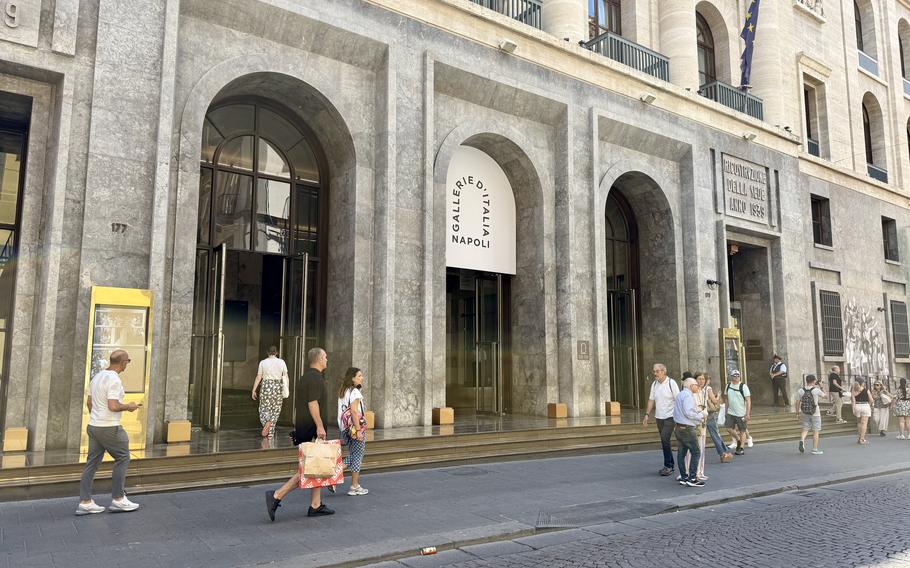
Gallerie d'Italia in Naples, Italy, features a variety of paintings, sculptures, antiquities and other art created over the centuries. It is housed in the former Banco di Napoli building on Via Toledo in the city's Quartieri Spagnoli neighborhood. (Alison Bath/Stars and Stripes)
In a country rich in art and history, it’s not hard to find a museum in nearly every Italian city with a sizable collection that can keep an enthusiast busy for at least half a day.
That sort of time investment is not necessary at Gallerie d’Italia Naples. The museum’s carefully curated trove of works by some of Italy’s most renowned artists is easily viewed in a couple of hours.
Located in the Quartieri Spagnoli neighborhood, the Naples museum is one of four under the Gallerie d’Italia umbrella, including galleries in Milan, Turin and Vicenza.
All told, a combined 35,000 works of art have been put on public view by banking group Intesa Sanpaolo at the four museums, according to the Gallerie d’Italia website.
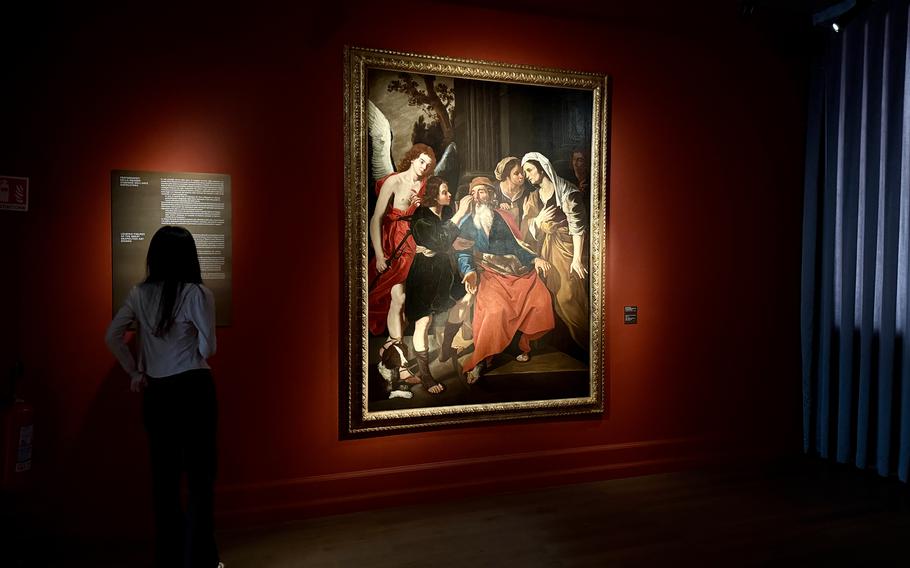
The permanent collection at the Gallerie d'Italia in Naples, Italy, contains paintings and sculptures that represent an anthology of Naples art from the beginning of the 17th century to the first decades of the 20th century. It includes one of the museum's largest paintings, "Tobias Restores his Father's Eyesight," painted by Hendrick de Somer around 1632. (Alison Bath/Stars and Stripes)
The Naples museum’s permanent collection is housed on the second floor. It features paintings, drawings, sculptures and other art that offer an anthology of painting in the city from the beginning of the 17th century to the first decades of the 20th century.
Among its treasures is “The Martyrdom of St. Ursula,” thought to be the last work completed by Michelangelo Merisi, more popularly known as Caravaggio, before he died shortly after leaving Naples in 1610.
Recently, the depiction of the fourth-century saint’s slaying, with Caravaggio himself appearing in a cameo, was on loan for a review of his works in Rome. It will return to the gallery soon.
Caravaggio’s influence on the Neapolitan art scene is evident in much of the early part of the collection, including “Samson and Delilah” by Italian Baroque painter Artemisia Gentileschi, who in 1616 became the first woman to gain membership to the Academy of the Arts of Drawing.
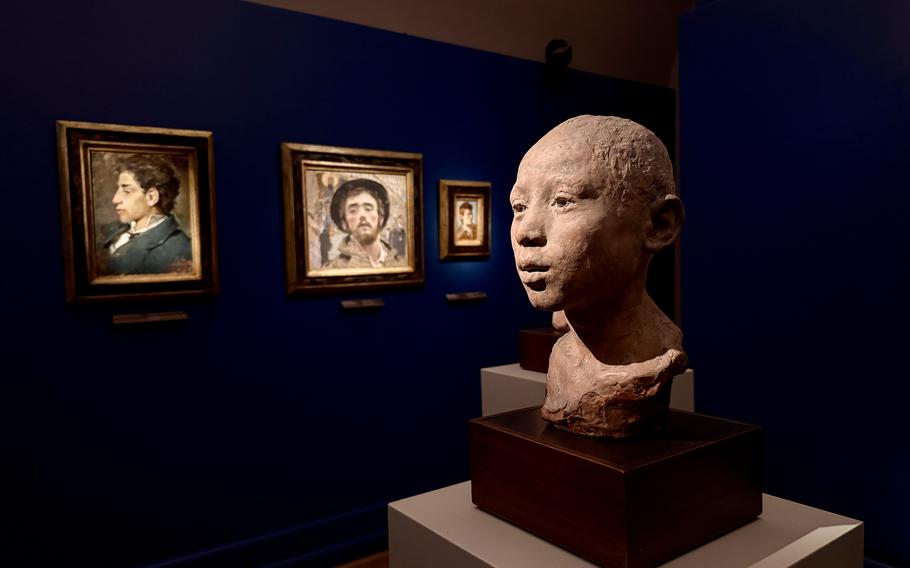
Gallerie d'Italia in Naples, Italy, features a variety of paintings, sculptures, antiquities and other art created over the centuries. It is housed in the former Banco di Napoli building on Via Toledo in the city's Quartieri Spagnoli neighborhood. (Alison Bath/Stars and Stripes)
Gentileschi’s portrayal of the biblical story shows a sleeping Samson whose hair has been cut by Delilah. The intensity of the gaze between Delilah and her handmaiden in acknowledging the deed is mesmerizing.
Those and other paintings in the collection are arranged in a series of small, intimate galleries with benches where viewers can sit and ponder the works, which span from the beginnings of figurative art in Naples in 1600s to the view and landscape movement of the 18th and 19th centuries.
Artists represented include Louis Finson, Bernardo Cavallino, Battistello Caracciolo and Francesco Guarini.
The exhibition ends with the sculptures and drawings of Vincenzo Gemito, a Naples-born sculptor, artist and draftsman known for his realistic portrayals of street youths.
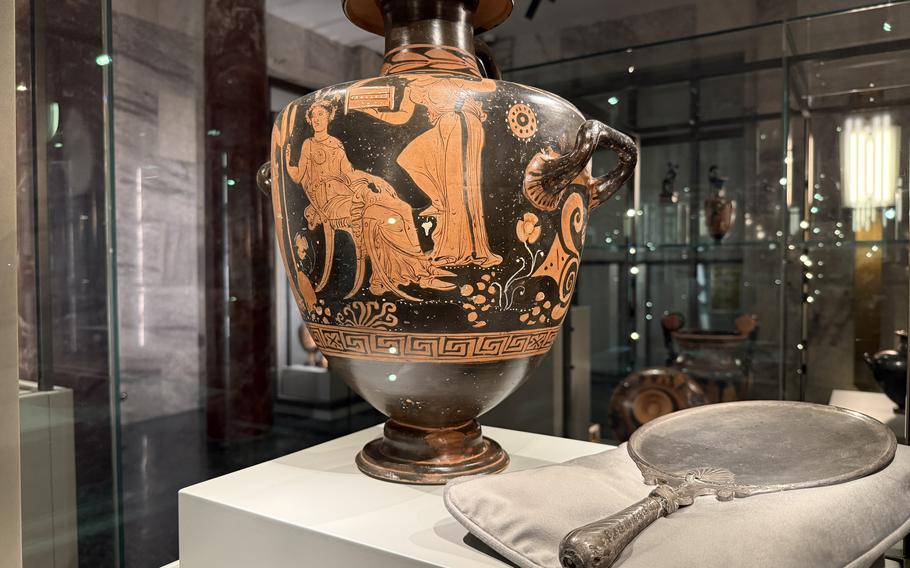
A collection of more than 500 Greek vases and other artifacts made from between the sixth and third centuries B.C. is on display at the Gallerie d'Italia in Naples, Italy. (Alison Bath/Stars and Stripes)
The display showcases the evolution of Gemito’s work from the terra cotta heads of children to portraits of individuals in bronze. The bronze “Head of a Philosopher” is particularly stunning for its detail.
Up on the third floor is a collection of more than 500 Greek vases and other antiquities dating from between the sixth and third centuries B.C., including frescoes found in Pompeii and Ercolano.
Nearby, contemporary art lovers will find a series of galleries showing a selection of 20th-century artworks. Titled “The Vitality of Time,” the exhibition includes pieces by Lucio Fontana, Alberto Burri, Piero Manzoni, Mario Schifano, Jannis Kounellis and Sol LeWitt, among other artists.
Particularly interesting are two works by Michelangelo Pistoletto, “Girl Walking” and “Man Repairing a Lorry,” created with tissue paper on mirrored steel.
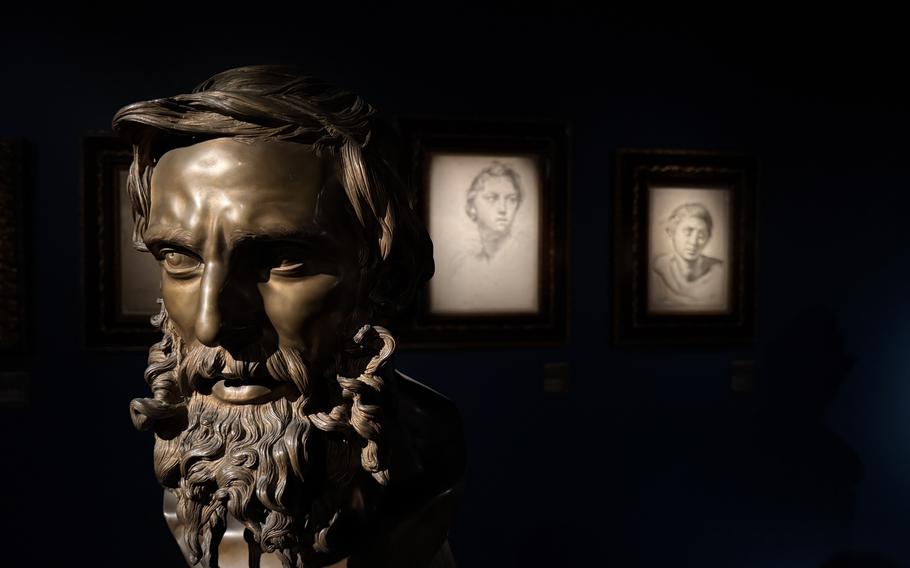
Gallerie d'Italia in Naples, Italy, features a variety of paintings, sculptures, antiquities and other art created over the centuries, including a large display of bronze and terra cotta sculptures and drawings from the Italian artist Vincenzo Gemito. (Alison Bath/Stars and Stripes)
The exhibition is capped by the “president’s lounge,” a display of wood paneling and furniture that is an ode to the restored building’s history as the former home to Banco di Napoli.
A ground-floor cafe offers coffee, drinks and snacks, and there also is a bar and restaurant on the top floor with a view of the Bay of Naples.
With its thoughtfully organized collections and changing exhibits, Gallerie d’Italia Naples is an easy, enjoyable way to get a good introduction to Italian art without being overwhelmed.
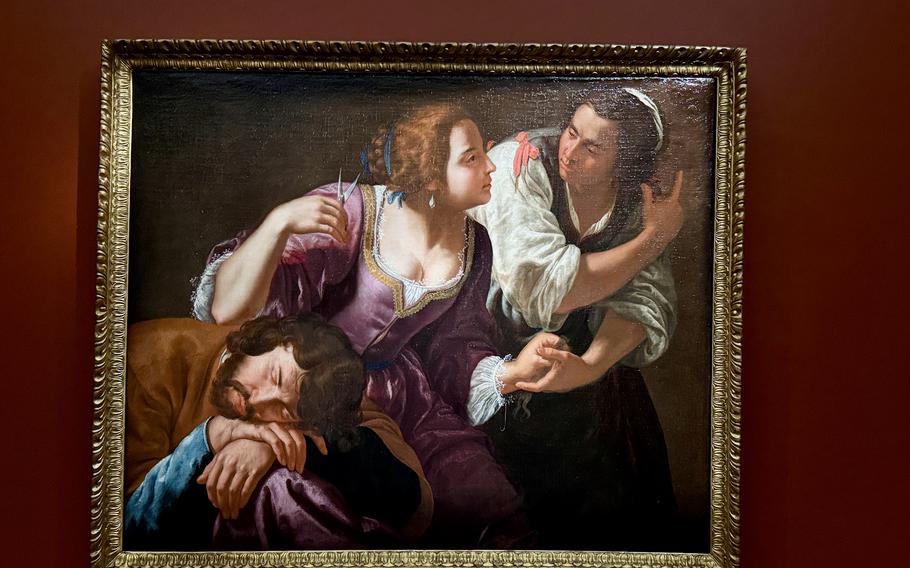
"Samson and Delilah" by Italian Baroque painter Artemesia Gentileschi is part of the permanent collection at the Gallerie d'Italia in Naples, Italy. The artwork is thought to have been painted in 1630. (Alison Bath/Stars and Stripes)
Gallerie d’Italia Naples
Address: Via Toledo 177, Naples, Italy. Metro line 1 (Toledo station)
Cost: 7 euros; free on the first Sunday of each month
Hours: Tuesday through Sunday, 10 a.m.-9 p.m.
Information: +39 800 167 619, gallerieditalia.com/it/napoli